
So guess what? I have two Nothing Phone 3 in for review today.
That’s right, I bought two Nothing Phone 3s so if anyone from Guinness World Records is watching… please… can I get my name in your books now? ‘Cause I don’t think anyone else in the world spent their money to own two of these.
I’m just messing around. I didn’t buy ‘em.
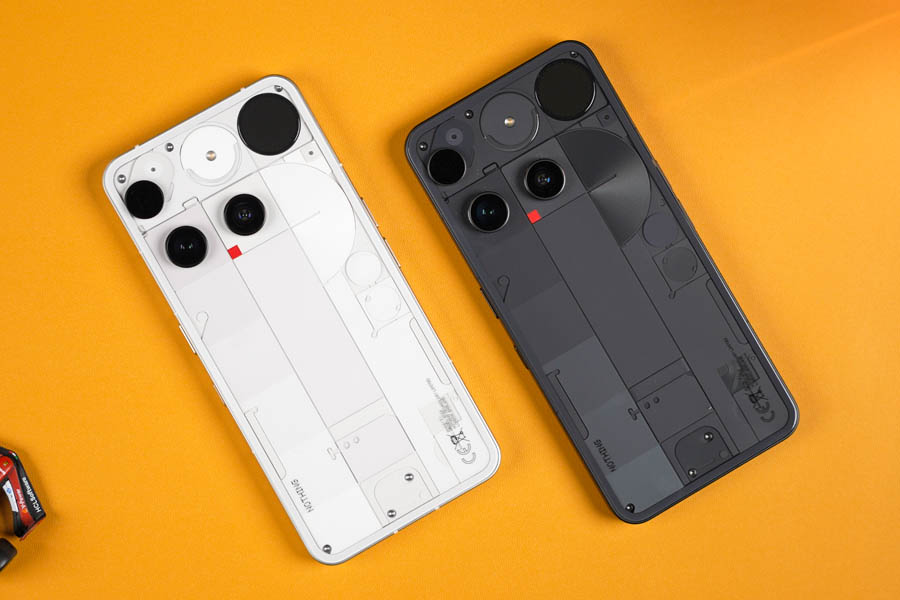
They’re both review units loaned to me, and there’s exactly one reason why I needed two Nothing Phone 3s in the first place. So instead of just me using the phone, gathering my experience, and then drafting a review… I wanted to do something… different for Nothing’s first “flagship” smartphone.
Nothing Phone 3 review: Specifications
- Design and Build: 160.6 x 75.59 x 8.99 mm, 218 gm, IP68 rating
- Display: 6.67-inch AMOLED panel, 1.5K+ resolution, 120Hz refresh rate
- Chipset: Snapdragon 8s Gen 4 5G (4nm mobile platform)
- Memory: 12/16GB RAM, 256/512GB UFS 4.0 storage (non-expandable)
- Software & UI: Android 15 with Nothing OS 3.5 on top
- Rear Camera: Triple (50MP primary, 50MP ultrawide, 50MP 3x periscope)
- Front Camera: 50MP sensor (hole-punch)
- Security: Fingerprint sensor (optical in-display)
- Connectivity: Dual-SIM (Nano + eSIM), WiFi 7, Bluetooth 6.0, USB-C, NFC, 5G
- Sensors: Accelerometer, Ambient light, E-compass, Gyroscope, Proximity
- Battery: 5,150 mAh with 65W wired charging (no power adapter inside the box)
- Price in Nepal: NPR 109,999 (12/256GB) | NPR 124,999 (16/512GB)
- Check the full specifications of Nothing Phone 3 here
Nothing Phone 3 review:
The reason I wanted to do things a little differently is because I have someone in the office who’s been a faithful fan of Nothing for as long as I can remember. He’s been using the Phone (2) (review) for over a year now, and I can’t stress enough how excited he was about finally upgrading to the Phone 3.
Do you guys remember how happy Michael was when Toby was finally leaving the office?
Yeah… multiply that by tenfold and you might have a rough idea of how psyched he was for this guy. Forwarding every little leaks and rumors to the office group chat, setting up discussions for what Nothing could be cooking… and just hyping it up all day everyday!
To the point where his enthusiasm honestly felt a little annoying.
But when the first (sorta) official-looking renders of Phone 3 hit the internet, everything changed.
It was like how Toby came back to the office and all Michael could do was scream “NO!”.
We even placed a bet, actually, on whether those leaked images were actually real. I was on the side saying those images were 100% real, while he wouldn’t believe it. I think “a design-first company would never design something so ugly” were his exact words.
Although on July 2 — the very next day after the launch event — he was paying for ice cream for everyone at the office. Thanks, Nothing.
The design.
- 160.6 x 75.59 x 8.99 mm, 218 gm
- Glass front/back, aluminum frames
- IP68 dust/water resistance
- A new “Glyph Matrix” interface
Even I’m not a fan of how the Phone 3 looks, to be honest. I’ve had it in my pocket for a couple of weeks now, and I thought (I hoped) it would grow on me after a while. But I don’t think that’s happening.
The asymmetry of it all is throwing me off every time I look at it.
I’m a big fan of different, different’s good. But apparently there was a limit to how much “different” I could digest and the Phone 3 is just too much for me.
So naturally, I thought most other people would feel the same way as well. Which is why I went around asking literally everyone I met how they felt about the Nothing Phone 3’s look.
From my mom, my sister, my neighbors, my friends, my colleagues, and even a handful of strangers I ran across. And out of 30 people I surveyed in this super-scientific test, guess how many agreed with me? Just 6.
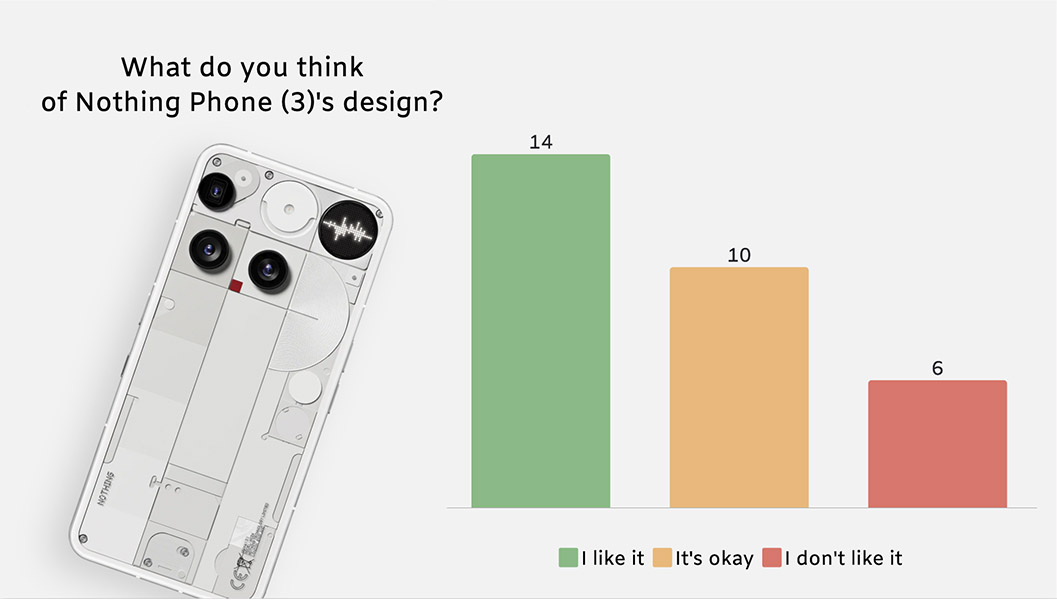
Thank God I didn’t bet on it because almost half the people in my survey had overwhelmingly positive things to say about this design. Most of them found it “different”, “unique”, “cool”, and “plain badass”.
So the lesson I’m taking away from my little experiment is that if you thought the Nothing Phone 3 looked horrible on renders, you might change your mind when you actually have it in your hands.
I didn’t, and neither did my fanboy teammate, but you might.
What the Glyph?!
And I gotta talk about this new “Glyph Matrix” too. Because I was thinking that Nothing had something special planned for its iconic “Glyph Interface” this time… but nope.
The lightshow is gone, replaced by this circular monochromatic LED display called “Glyph Matrix” that’s supposed to be more functional, more intuitive.
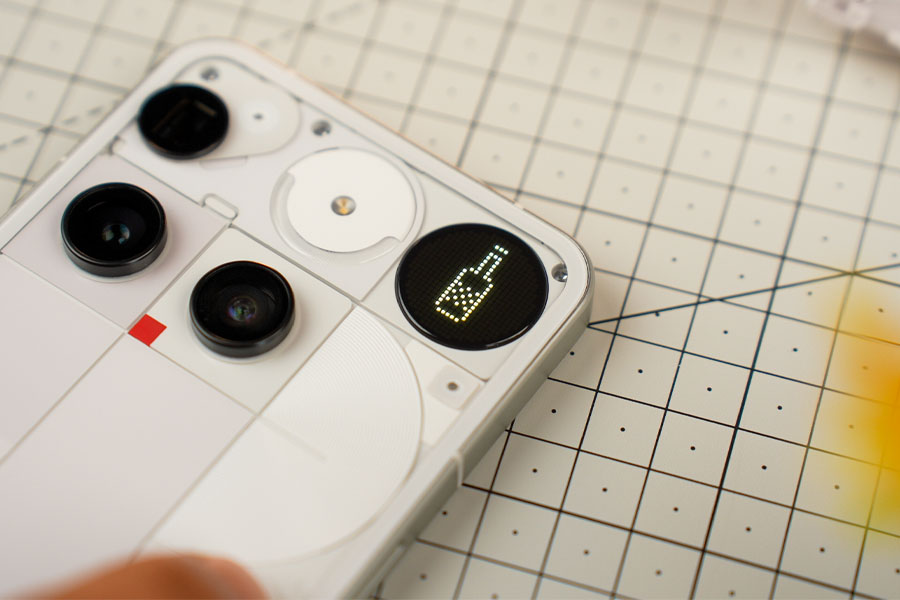
Now, before I say anything else, I’ll definitely admit that there’s a lot of benefit to having a proper, rich visual interface instead of just some flashing lights.
Take “Essential Notifications”, for example.
It’s probably my favorite feature on a Nothing phone, and it helps me stay focused by lighting up only when I get notifications from apps that are important to me. And while that used to be limited to a single strip of light on literally every single Nothing phone before this, the Phone 3 takes it a step further.
I can get super nitpicky and create my own rules on what apps, contacts, or keywords get to notify me, and I can also customize them with emojis. Or even a photo from my gallery but they honestly look terrible on this tiny dot-matrix display.
I got around setting it up pretty easily as well, although I feel like this super useful feature can quickly feel a little overwhelming to get going for most folks. Since Nothing doesn’t explain how to set it up anywhere. Uh-uh.
I guess you might find it somewhat familiar if you’ve ever used “Shortcuts” on iPhones or “Routines” on Samsung phones, but there definitely needs to be some sort of tutorial for this… somewhere.
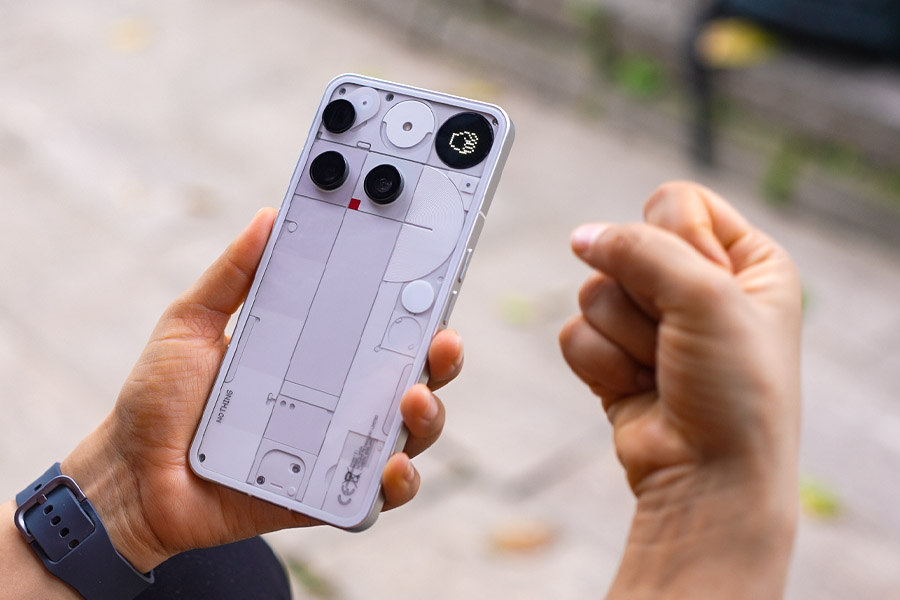
The Glyph Matrix also has a few other tricks up its sleeve.
Including a clock, a battery level visualizer, a cool-but-useless viewfinder to take selfies, a couple of games like rock-paper-scissors, spin the bottle, and also a stopwatch. Which might be the most stupidly-designed thing I’ve seen recently.
I heard you like stopwatches
So the way I interact with these “Glyph Toys” — as Nothing likes to call them — is from that small capacitive button below the Glyph Matrix. I can single-press to shuffle through the toys and long-press to launch one.
The only problem with this design for a stopwatch is that I now need a stopwatch for my stopwatch because there’s a whole lot of delay in starting and stopping the stopwatch.
The even bigger issue I have with this Glyph Matrix is that it’s just not as cool as the Glyph lights. I may be in the minority on this one but man… it looks kinda boring compared to the full-of-life, punk rock aesthetics of having all those lightstrips glow up on older Nothing phones. Especially the Phone 2.
I really hope Nothing finds a way to make it a lot more useful because — so far — I don’t see how this is any less “gimmicky” than the Glyph Interface they left behind. Like I just said, at least that one looked cool!
The Phone 3 is as sturdy as they come
But keeping aside all my complaints for a moment, I must say this is an incredibly well-built phone. Kudos to Nothing on that.
The use of metal for the frames and glass for everything else means its hands-on feel is just *chef’s kiss*. I think this is the first time Nothing shipped a protective case inside the box itself, although this is also the first Nothing phone that I think you should use without a case to really appreciate how nice it feels to hold.
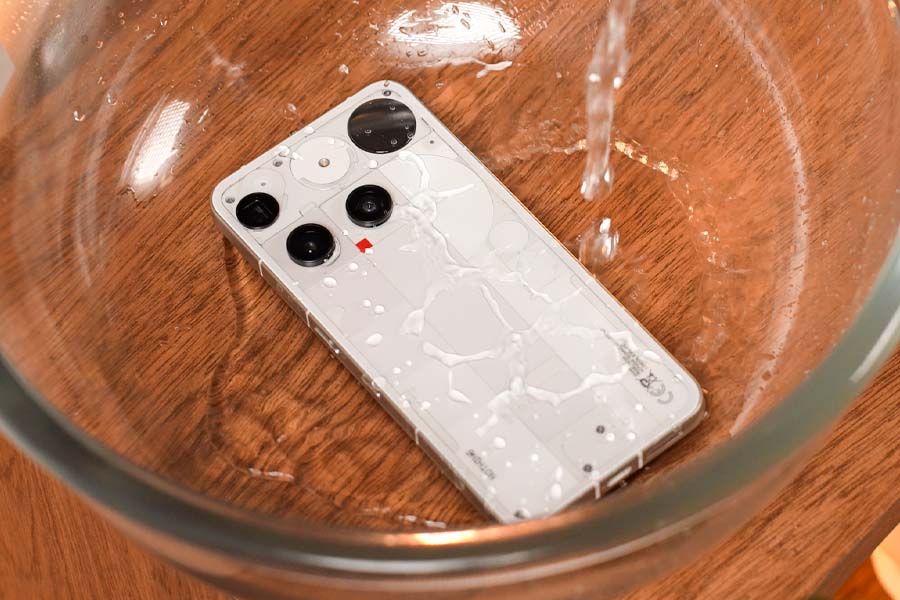
It’s also fully dust and watersealed with an IP68 rating — but for what’s supposed to be a flagship phone — Nothing has sure made some bizarre compromises with the Phone 3. Which is something you’re gonna hear a bunch of times throughout this review, by the way.
I promise you.
Like how it uses Corning’s inferior Gorilla Glass 7i for the display and Victus glass for the back. Instead of the newer and stronger second-gen Victus glass. A slower USB 2.0 port instead of USB 3.2.
I normally don’t like nitpicking about these kinds of stuff — and I doubt any of my nitpicks are dealbreakers either — but when you say something is “flagship” and then skip on stuff that’s naturally expected from a “flagship”, I have to.
But the million-dollar question is?
Okay, so the Phone 3 has a controversial design. We get it. But nothing else about it could possibly get any worse, right? Right?
That’s exactly what we were thinking as well until Nothing announced the price. I was guessing the Phone 3 would end up selling for like NPR 80,000 in Nepal… while it turns out most of my team were even more delusional.
Hoping it would cost around NPR 70,000 only.
‘Cause you probably already know by now that the Phone 3 costs an absurd NPR 110,000. What’s ironic is that this makes India — Nothing’s largest market by far — also where the Phone 3 costs the most. Since the Phone 3 is even more expensive in India with a starting price of INR 80,000 (NPR 128,000).
I think I read somewhere about how Nothing wasn’t making any money with their phones before this… so is that why this thing is so expensive, Carl?
And remember my fanboy colleague?
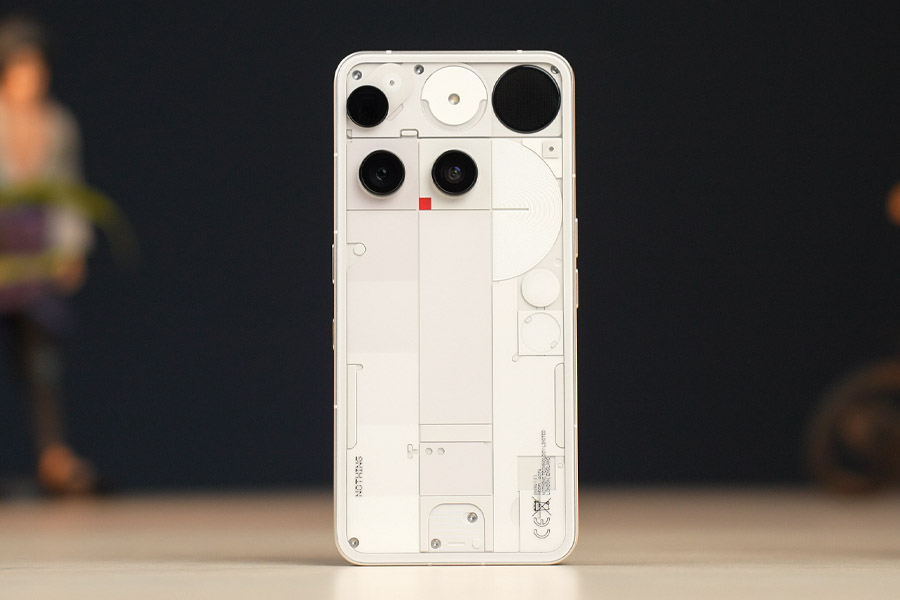
He was actually convinced this was a “prank” at first… and went through all the 5 stages of grief before finally accepting that the Phone 3 is simply asking too much. I was also ready to dismiss it as another overpriced fish in the aquarium at first, but you know me.
I don’t wanna make any claim without testing the product myself. Maybe Nothing had some method to this madness, I don’t know. That’s what I had to find out.
And fast forward to a couple of weeks later, I’ve come to realize that there are definitely some aspects of the Phone 3 that kinda feel flagship-ish. And some aspects that feel a couple steps below what I’d call flagship.
A flagship-ish display
- 6.67-inch 1.5K+ AMOLED panel
- Gorilla Glass 7i protection, 120Hz refresh rate (no LTPO)
- 1,600 nits (HBM) / 4,500 nits brightness (HDR)
Like its display.
It’s big, it’s bright, it’s got lovely uniform bezels on all four sides, the touch response feels nice and quick, and the haptics are super crisp and sharp as well.
So doesn’t matter if I’m casually browsing the internet out in the Sun, playing some games, streaming a show, or replying to my group chats, the Phone 3’s display is up for all those tasks.
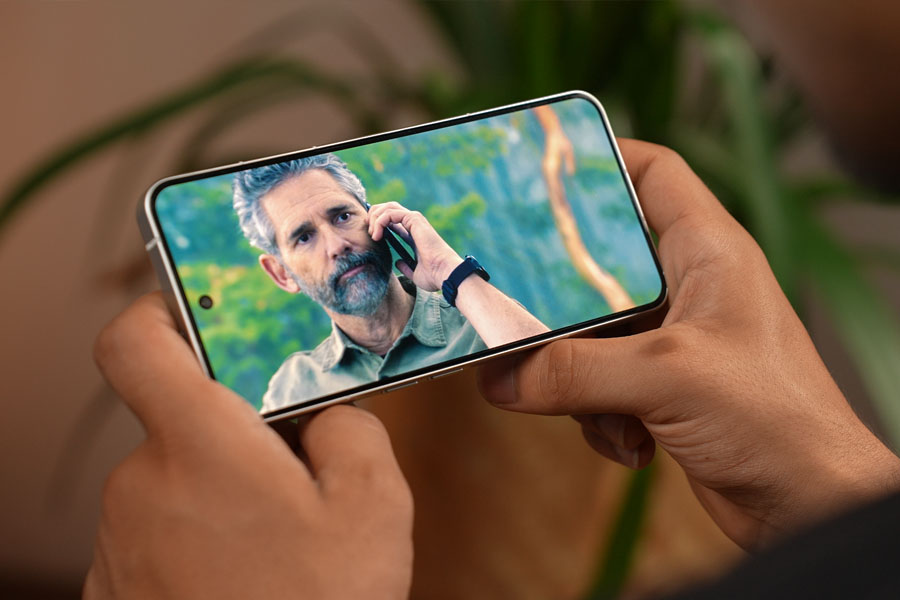
I know Nothing had to downgrade the PWM dimming rate from 2,160Hz to 960Hz in the final retail software for “better picture quality”, although this is a total non-issue for me. But the reason I say this display is “flagship-ish” and not “flagship” is because — once again — Nothing decided to make some bizarre compromises here.
- Like how there’s no LTPO to save power by dropping the refresh rate to just 1Hz. It can only swing between 60 and 120Hz.
- This awkwardly placed fingerprint reader is also an optical one instead of the usual ultrasonic fingerprint reader we see on most flagship phones.
Meaning you’ll have less luck getting into your phone in case your hands are dirty or wet.
- And since Nothing doesn’t ship any bloatware apps on its phones — and Netflix doesn’t give HDR certification without having its app pre-installed — I guess your Netflix streaming sessions could feel somewhat dull too.
In an (un)elite league of its own
- Qualcomm Snapdragon 8s Gen 4 (4nm)
- 12/16GB RAM, 256/512GB storage (non-expandable)
I’m getting notes of flagship-ish characters from the Phone 3’s performance as well.
‘Cause instead of the Snapdragon 8 Elite chip that we all expected from a “true flagship”, Nothing went with Qualcomm’s next best thing. The Snapdragon 8s Gen 4.
The same Snapdragon 8s Gen 4 chip that you can find on some Chinese smartphones that literally cost less than half as much as the Nothing Phone 3. Like the POCO F7 or the iQOO Neo 10.
And if you look at all sorts of benchmarks, it’s obvious that Qualcomm’s second-best processor is a lot underpowered than its very best. In every. single. thing.
But I think both of us agreed right away that its 8 Elite absence wouldn’t be such a massive deal. I’ve tested this 8s Gen 4 chip on a couple of other phones already, and I know how powerful it is. And as I expected, I can’t remember a single time when it felt like the Phone 3 couldn’t keep up with whatever I was doing.
Even when it comes to gaming, the 8s Gen 4 actually behaves a lot like what you’d get from a phone with the 8 Elite chip.
The one pesky little thing that ruins the fun here is that the Phone 3 gets hot.
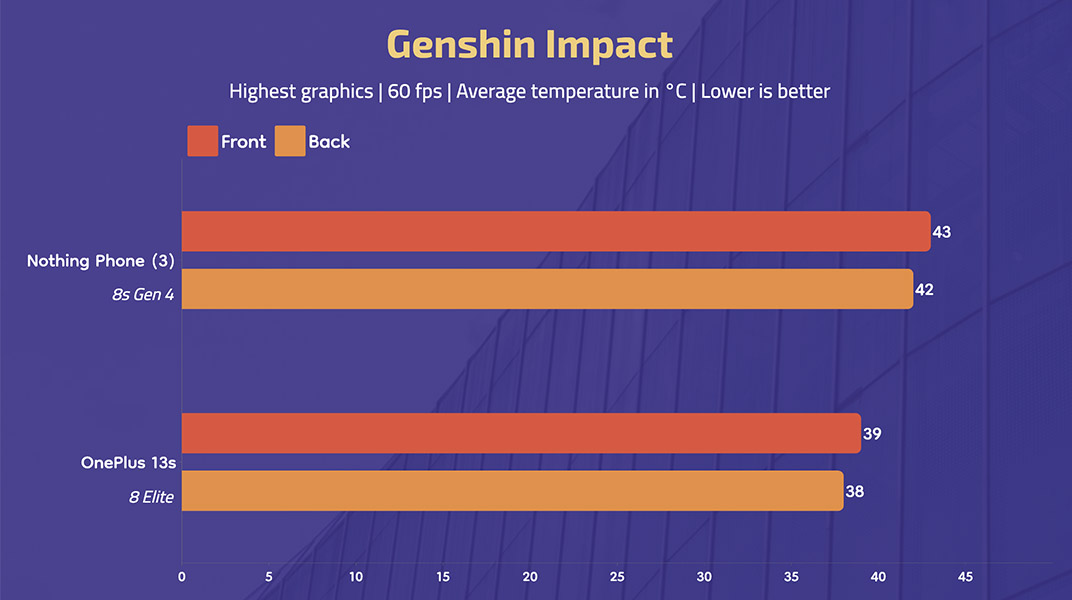
I’m not even trying to be funny when I say that its thermals are actually worse than some of the compact phones I’ve tested recently. And I can’t blame it all on the summer heat either because I’ve been testing phones all summer. And this is by far the hottest phone on my list.
The worst part is that the Nothing Phone 3 tends to warm up when I’m doing something as basic as doomscrolling on social media as well. So I’m not sure if the blame is on Qualcomm for its thermally unimpressive chip, Nothing for its poor cooling solution, or both. Maybe both.
Nothing OS is the gift that keeps on giving
- Android 15 with Nothing OS 3.5 on top
- 5 years of OS and 7 years of security updates
And the only aspect where the Phone 3 acts and feels like a “true flagship” is the software. I’ve said this before, and I don’t mind repeating myself: Nothing OS is easily one of the best Android skins out there. And also among my personal favorites. Right below Samsung’s excellent “One UI 7”.
You know how we usually say “it just works” when talking about Apple products? I think it’s time we started describing Nothing OS the same way as well. It just works, man!
The animation, the design, and the overall user experience… everything feels so thought-out, so purposeful, and right how it should be. I’m not that into customizing every little thing on my phone these days like I used to be, but my colleague still is.
And you should see how differently we set up our homescreens because I’m more about a clean aesthetic that’s easy on the eyes. While he enjoys a bit of chaos with all… those personalized widgets.
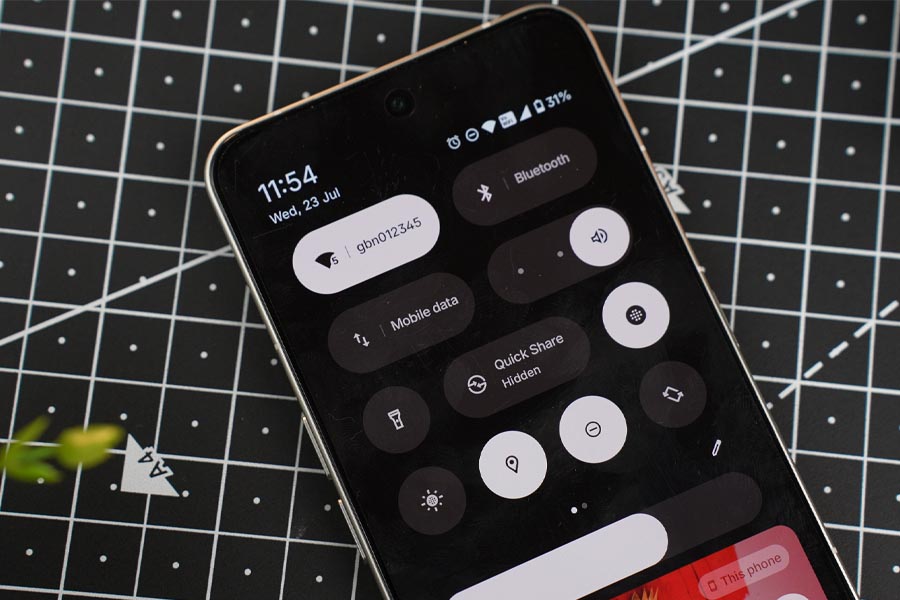
I guess what I’m trying to say is that whether you prefer a software experience that doesn’t try to get in your way — or if you’re super into customizing every little thing about your phone — you’re gonna love Nothing OS.
I was also really looking forward to the new “Essential Search” thing on Nothing OS 3.5.
It’s a really cool feature that lets me search through everything from my files, my contacts, my messages, do some basic math, unit conversions, or even get answers using AI. Right from the search bar. I’ve been using something similar on my MacBook with “Raycast”, so you can only imagine how psyched I was for Nothing’s Essential Search.
But it turns out this feature isn’t available in a lot of countries. Including Nepal. And no, a VPN couldn’t trick it either.
That means the only bit of AI feature at my disposal on the Phone 3 was the “Essential Space”. Which even gets a dedicated button so I can screenshot a memo or attach a voice note and have Nothing’s AI summarize or contextualize my notes into something hopefully useful. Or even have it set helpful reminders.
But like I said in my Nothing Phone 3a (review), this whole thing feels quite undercooked.
The “summarizing” part itself feels weak… and the fact that I can’t access these notes anywhere else besides the phone is such a major bummer. Meaning I’m still taking notes on Google Keep like always… that I can access from my phone, my laptop, and even my smartwatch.
I think Nothing can very easily shut me up by building a web portal for Essential Space, so I’m still pretty hopeful. And there’s a lot of time to do so as well because the Phone 3 has 5 whole years of OS updates and 7 years of security updates to its name.
Its battery life isn’t impressive…
- 5,150 mAh battery (65W wired charging)
- 15W wireless, 5W reverse wireless charging support
- No power adapter inside the box
Alright. So far, I haven’t touched on two things about the Nothing Phone 3.
• the battery life and the cameras.
And as you may have guessed already, both of ‘em are a couple of steps below what I’d expect from a flagship phone.
The battery thing was especially surprising because the Phone 3 actually has a pretty decent 5,500 mAh silicon-carbon battery in India. Or a slightly smaller 5,150 mAh one on the global unit including Nepal.
We have both of ‘em at our office, and man… it had been a while since I had battery anxiety with a phone. It struggles to go through the entire day if it’s a particularly busy one where I’m taking a lot of photos and videos, using mobile data and navigation, while also passing the time with some games in my free time.
And like 6 – 6.5 hours of screen time was all we managed to get out of this guy before having to plug it in. Where our 65W CMF charger was able to fill it completely in a little over an hour.
… and neither are its cameras.
- Triple camera setup at the back
- (50MP main, 50MP ultrawide, 50MP 3x periscope zoom)
- 50MP selfie camera (hole-punch cutout)
Next is the cameras.
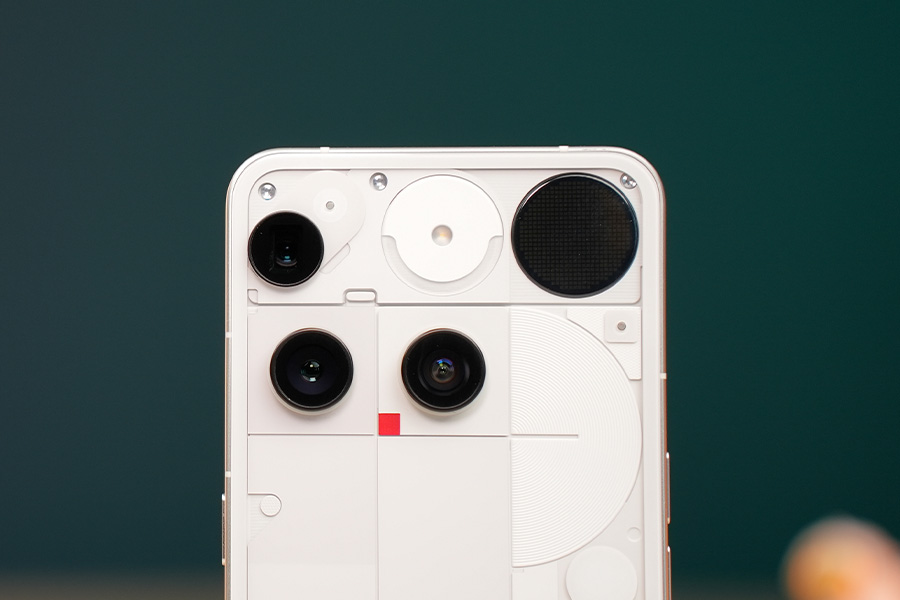
The Phone 3 brings a 50MP sensor across the board for selfies, ultrawide, 1x, and 3x zoom shots — so hardware-wise — things seem pretty solid. Even though its periscope camera is weirdly smaller and slower than the one on Nothing’s cheaper Phone 3a Pro (review).
| Nothing Phone 3 | Nothing Phone 3a Pro |
| 50MP OmniVision OV50H main sensor, 1/1.3”, f/1.68, OIS + EIS | 50MP ISOCELL GNJ main sensor, 1/1.56”, f/1.88, OIS + EIS |
| 50MP ISOCELL JN1 ultrawide sensor, 1/2.76″, f/2.2, 114° FOV | 8MP Sony IMX355 ultrawide sensor, 1/4.0″, f/2.2, 120° FOV |
| 50MP ISOCELL JN5 periscope sensor, 1/2.75″, f/2.68, OIS + EIS | 50MP Sony LYTIA 600 periscope sensor, 1/1.95″, f/2.55, OIS + EIS |
I warned you about such bizarre compromises, right?
“Not to worry”, I said to myself. “Because the Phone 3 has a superior image processor with that 8s Gen 4 chip… and Nothing must have optimized its cameras the best it could too.”
So for what it’s worth, I found the Phone 3’s casual point-and-shoot experience to be pretty solid. The camera app also feels pretty intuitive.
From colors to dynamic range and details, I’ve shot a bunch of amazing photos with this phone. And I don’t know how Nothing did it but the Phone 3’s selfies and lowlight photos are simply fantastic. I’ve no complaints there.
But you know… that “consistency” I expect whenever I’m carrying a proper flagship phone in my pocket is sadly missing on the Phone 3.
- Its ultrawide lens is the weakest of the bunch,
- it clearly struggles with things like dynamic range and color balance in challenging conditions
- I also found the consistency among its lenses to be off
- while it was almost always frustrating to shoot something close-up because the Phone 3 would have no idea where to lock focus.
Luckily, I did receive a software update that improved the sharpness of photos from the periscope camera by quite a bit.
Including when shooting portraits, although I still think the way it handles skin tones and shadows seems off every now and then.
I actually compared its cameras with Galaxy S25 as well… just to see where Nothing’s flagship phone stands. And if I had to rate these two, I’d give the Phone 3’s cameras a solid “B+”. While the Galaxy S25 earns an “A”.
Even when it comes to videos, the Nothing Phone 3 can shoot at up to 4K 60 fps from all four of its cameras. And while the footage itself looks pretty decent — minus the slightly wonky stabilization if I make any sort of sharp movement — the sad part is that I can’t really switch between all the lenses in this mode.
- If I start the recording from the main camera, I can’t switch to the ultrawide lens in the middle of recording.
- And if I start recording from the ultrawide camera, I can’t switch to the zoom lens.
It’s just… not what I’d call flagship level at all.
Nothing Phone 3 review: Conclusion
So to wrap up this review, I think it’s pretty clear that the Nothing Phone 3 has been a pretty major letdown. Not just to critics like me, but also to most hardcore Nothing fanboys who were truly excited for the company’s first flagship phone.
The pricing is absurd, and the product itself doesn’t live up to Nothing’s flagship promises. The Phone 3 feels underplanned, underdesigned, and ultimately underwhelming.
That’s as simple as I can put it.
I can imagine just how differently my review of the Nothing Phone 3 would’ve gone if it was only priced like 20 – 30% cheaper. But, alas! So if you really want a flagship phone (and are willing to spend over 1 lakh rupees on one), then I don’t think you should get the Phone 3.
Since you have your pick of the litter with everything from Samsung Galaxy S25/S25+ to OnePlus 13 (review) and Xiaomi 15 Ultra (review), if you can stretch your budget by a few thousand rupees more.
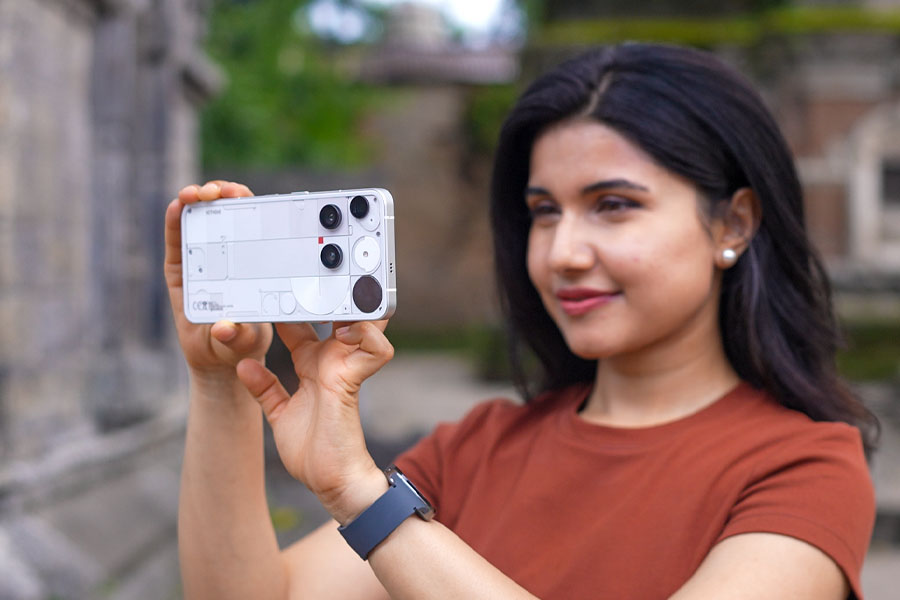
I also can’t help but wonder if Nothing was ready to swim with the flagship sharks this early in the game. Or if it even needed to, to be honest.
Because we’ve seen how even more mature brands like OnePlus and Xiaomi have struggled to nail the flagship experience for the longest time.
I’m not saying that just because those other brands couldn’t, neither could Nothing. But sometimes when you shoot for the Moon, you may experience rapid unscheduled disassembly right after liftoff.
Now I see Carl saying stuff like how they didn’t build this phone for everyone… or riding off MKBHD’s “crabs and lobsters” analogy to convince the public how the Phone 3 is like the ultimate “different” phone in the world.
And I’m over here like… “did you guys forget all the other phones you made?”
Literally all of them were kissed with uniqueness while still being solid value.
I also realize that Nothing is still a relatively new brand in the smartphone world. With not a whole lot of resources to compete against the big boys at this time. But at the end of the day, I can only sympathize with my words. Not my wallet.
- Watch video review of Nothing Phone 3
Nothing Phone 3 review: Pros and cons
| Pros | Cons |
| • A polarizing design | • A polarizing design |
| • The Phone 3 is very well-built | • Terribly priced (seriously, wth?) |
| • Nothing OS 3.5 is very, very good | • Its cameras are not flagship material |
| • The battery life should’ve been better as well | |
| • A bunch of small, annoying compromises across the phone |













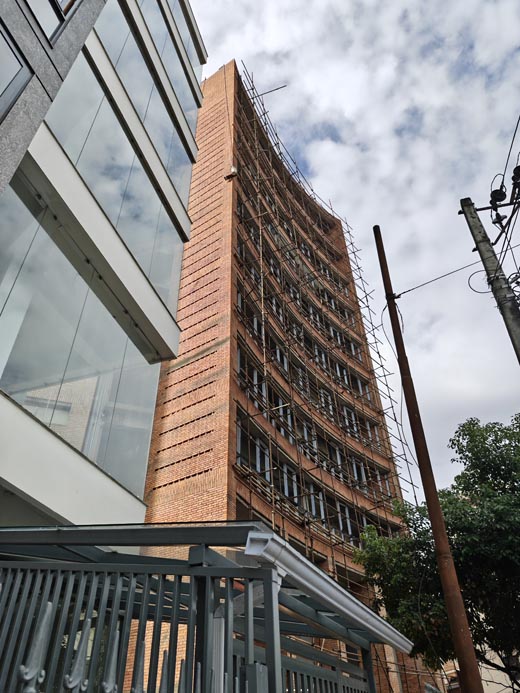










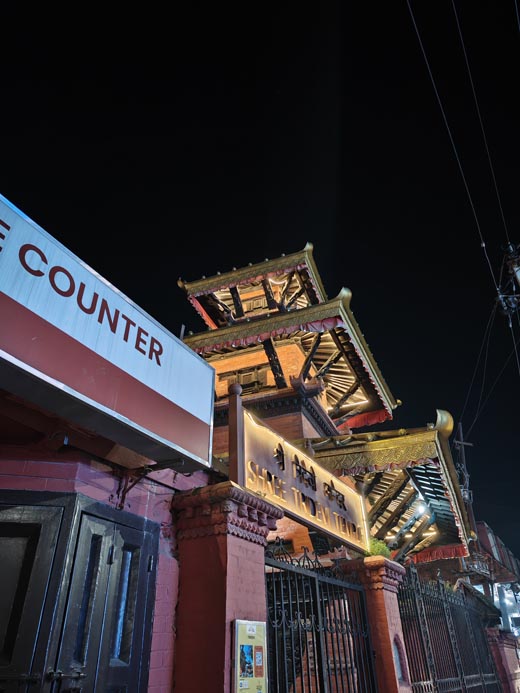










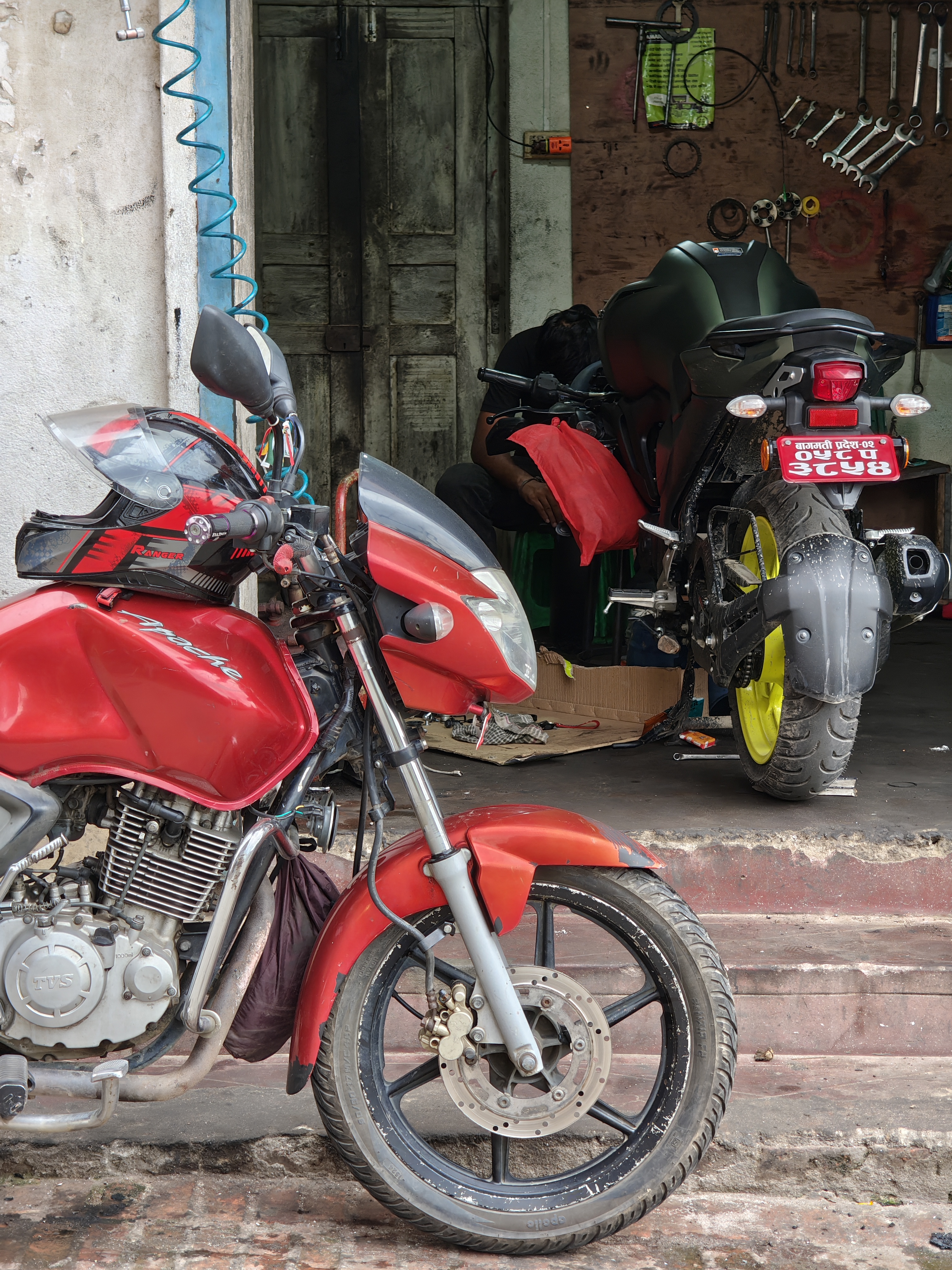



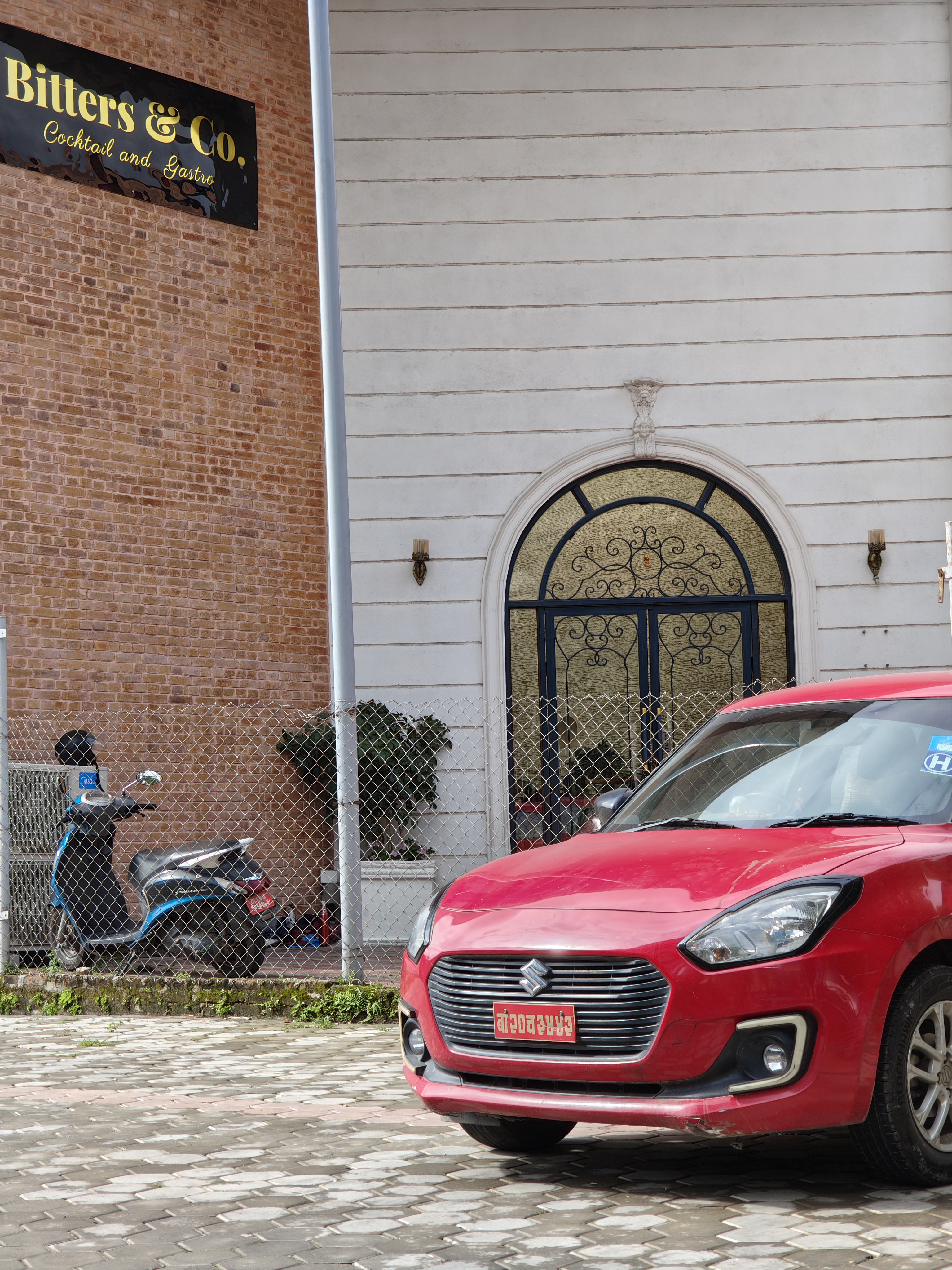





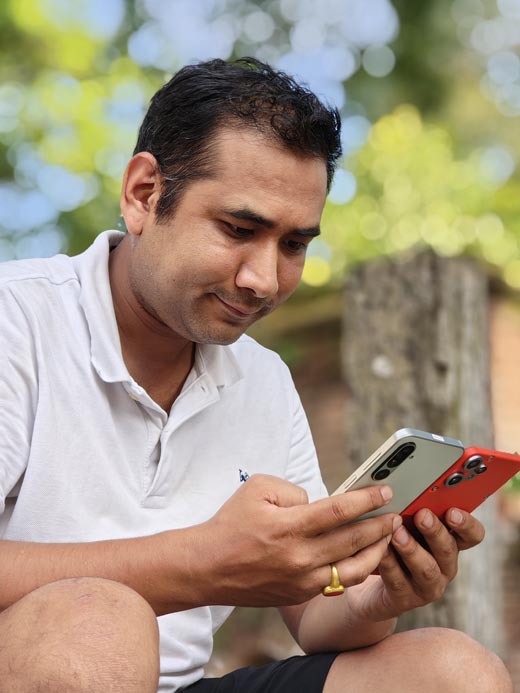


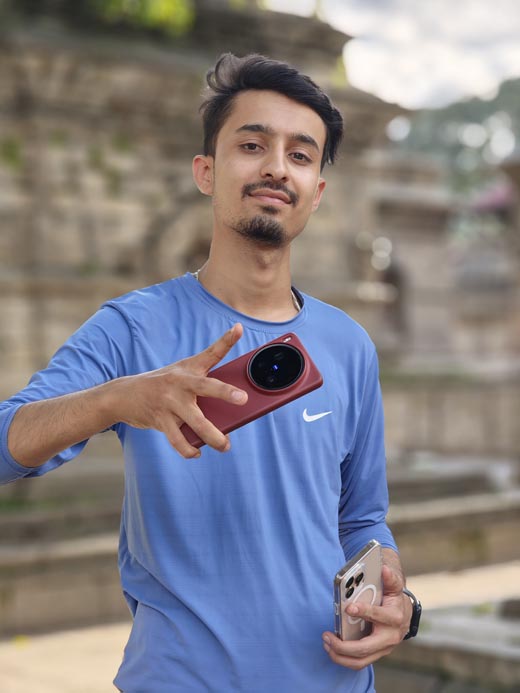














![Best Gaming Laptops in Nepal Under Rs. 200,000 (रु 2 Lakhs) [2025] Best gaming lapotp under 2 lakhs Nepal Feb 2025](https://cdn.gadgetbytenepal.com/wp-content/uploads/2025/01/Best-Gaming-Laptops-Under-2-Lakh-Nepal-Feb-2025-Update.jpg)
![Best Gaming Laptops in Nepal Under Rs. 120,000 (रु 1.2 Lakhs) [2025] Best Budget Gaming Laptops Under Rs 120000 in Nepal 2025 Update](https://cdn.gadgetbytenepal.com/wp-content/uploads/2025/05/Best-Budget-Gaming-Laptops-Under-Rs-120000-in-Nepal-2024-Update.jpg)
![Best Gaming Laptops in Nepal Under Rs. 150,000 (रु 1.5 Lakhs) [2025] Best gaming laptops under 150k November 2024](https://cdn.gadgetbytenepal.com/wp-content/uploads/2024/11/Best-gaming-laptops-under-150k-November-2024.jpg)

![Best Mobile Phones Under Rs. 15,000 in Nepal [Updated 2025] Best Phones Under 15000 in Nepal 2024 Budget Smartphones Cheap Affordable](https://cdn.gadgetbytenepal.com/wp-content/uploads/2024/03/Best-Phones-Under-15000-in-Nepal-2024.jpg)
![Best Mobile Phones Under Rs. 20,000 in Nepal [Updated] Best Mobile Phones Under NPR 20000 in Nepal 2023 Updated Samsung Xiaomi Redmi POCO Realme Narzo Benco](https://cdn.gadgetbytenepal.com/wp-content/uploads/2024/01/Best-Phones-Under-20000-in-Nepal-2024.jpg)
![Best Mobile Phones Under Rs. 30,000 in Nepal [Updated 2025] Best Phones Under 30000 in Nepal](https://cdn.gadgetbytenepal.com/wp-content/uploads/2025/01/Best-Phones-Under-30000-in-Nepal.jpg)
![Best Mobile Phones Under Rs. 40,000 in Nepal [Updated 2025] Best Phones Under 40000 in Nepal 2025](https://cdn.gadgetbytenepal.com/wp-content/uploads/2025/07/Best-Phones-Under-40000-in-Nepal-2025.jpg)
![Best Mobile Phones Under Rs. 50,000 in Nepal [Updated 2025] Best Phones Under 50000 in Nepal](https://cdn.gadgetbytenepal.com/wp-content/uploads/2025/01/Best-Phones-Under-50000-in-Nepal.jpg)
![Best Flagship Smartphones To Buy In Nepal [Updated] Best flagship phone 2025](https://cdn.gadgetbytenepal.com/wp-content/uploads/2024/07/Best-Flagship-Phones-who-is-it-ft-1.jpg)